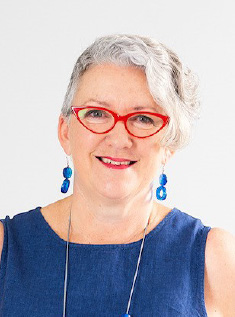 AIDR supports, collects and shares evidence and research that contributes to a strong research base and to the translation of evidence and research into effective practice. This contributes to an increasingly disaster-resilient nation.
AIDR supports, collects and shares evidence and research that contributes to a strong research base and to the translation of evidence and research into effective practice. This contributes to an increasingly disaster-resilient nation.
We do this through all of our work and, in particular, through the curation and publication of the Australian Journal of Emergency Management (AJEM).
Since 1986, AJEM has provided researchers and others working in disaster resilience a pathway to build on existing research, to learn from the experience of others and to strengthen capabilities. Through all of our products and services, AIDR collaborates with and includes researchers and research focused organisations, including Natural Hazards Research Australia and other institutions with an interest and focus on disaster resilience.
To continue to strengthen disaster resilience practice across Australia, we must encourage, gather and publish leading research to inform that practice. AJEM is an important journal that provides analysis, considered views, lessons learnt and insights into current and future issues from both researchers and practitioners from all levels of emergency management. AJEM is, for many practitioners, their primary ‘go to’ journal; one they access to ensure that they remain current and evidence-based in their approaches to building disaster resilience.
Since joining AIDR in late 2022, I have been leading the editorial team to plan how best to strengthen and consolidate AJEM’s long and strong history. Many researchers and practitioners contributed to a survey that AIDR conducted to inform a refresh of AJEM. This survey closed at the end of March and we will be considering the feedback it provided. Some survey respondents were the journal’s peer reviewers whose contribution to the assessment of research papers maintains AJEM’s high academic standard. Some respondents have published in AJEM, others have not. All perspectives are valuable as we consider the journal’s future contribution. This process reflects my desire to understand how we enhance AJEM and reinforce it as a desirable journal in which researchers strive to publish.
AJEM provides ready access to relevant and informed disaster resilience and risk reduction research. I want to ensure that we are providing the evidence and knowledge that will make a difference to practice and to outcomes in Australia, for our regional neighbours and for other areas of the world. To achieve this, we must ensure that AJEM is a valued and attractive publication for researchers and to its global readership.
Following an internal review process that the AJEM editorial team is embarking on through 2023, it is my hope that we will expand the focus of the journal and the communities it seeks to be in service to. We will encourage contributions that reflect the full range of disaster resilience, including economic resilience; resilience of the natural and built environments; health and wellbeing as it is influenced by hazards and emergency events; community and social capital and cultural and indigenous knowledge and practices. Expanding the scope of AJEM to include research in these broader topics will improve our understanding of each of these important areas of knowledge and the intersections between them.
As practitioners are aware, building and fostering disaster resilience involves engagement with diverse groups. This includes indigenous communities and organisations, primary producers, health practitioners, spiritual leaders, community groups and organisations, community members, business owners, insurance and banking providers, emergency services organisations, philanthropists, corporate business and many others. I would like AJEM to include research and practice of relevance to these many perspectives.
We are at an important moment in the evolution of AJEM's contribution to emergency and disaster resilience both nationally and internationally. We have an exciting opportunity to contribute more to the emergency and disaster sectors through the publication of research, thought leadership, and through the sharing of experience of practitioners in the field.


